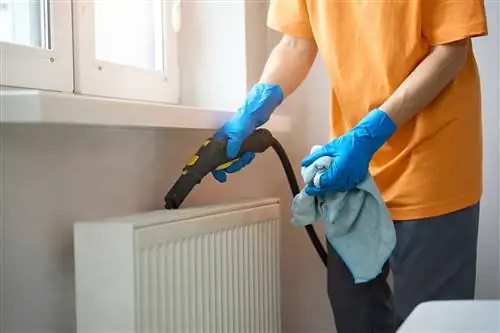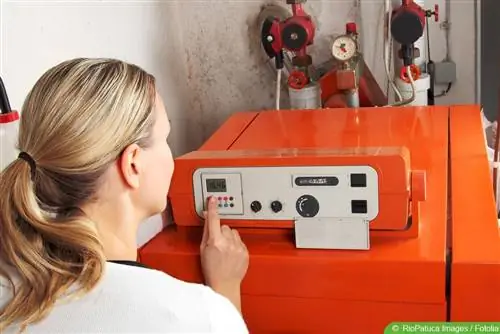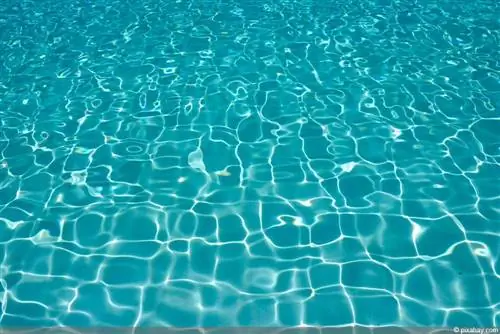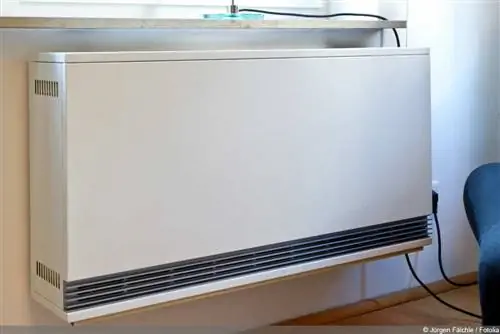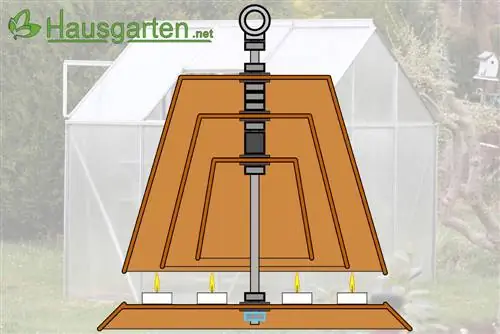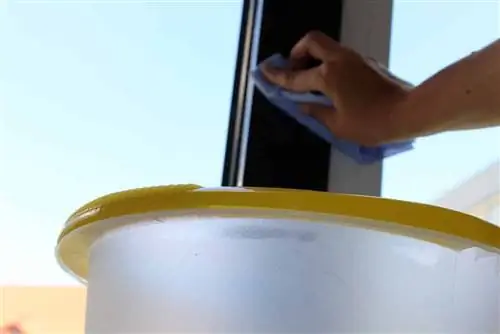- Author admin [email protected].
- Public 2023-12-17 03:39.
- Last modified 2025-01-24 12:45.
Not only furniture can collect dust in an apartment, you also have to pay attention to the heaters and clean them regularly. This is not just an improvement in appearance. Dust on and in the radiators can also significantly reduce the heating output in winter. The article explains how you should ideally proceed here.
Why clean your heater regularly?
If dust settles on and in the radiator, then it is by no means just a visual problem:
- Heating output is reduced by up to 30%
- Heating bill can be higher
- Dust deposits are stirred up by warm air
- Dust spreads again throughout the room
- Particles can irritate the mucous membranes of the throat and nose
- Colds are favored
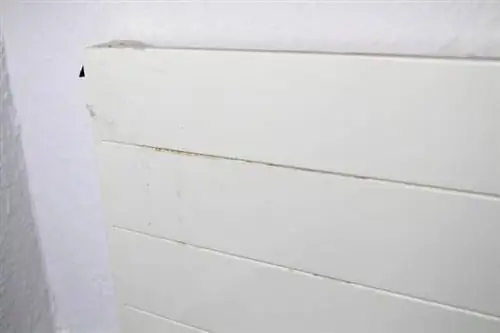
Note:
Especially if you or a member of your household suffers from a house dust allergy, you should clean your radiators more often and more thoroughly.
Ideal time
As a rule, it is enough to clean the heaters once or twice a year. You should pay particular attention to the times for cleaning the inside and outside:
- Interior cleaning before the start of the heating season
- old dust inside will otherwise rise to the top
- sinks down between the slats and settles
- A lot of dust collects in the hollow body of the heater
- so clean the inside again after the heating period
- also clean the outside at least once a year
- also more common if the outer surface is smooth
Tip:
Due to the high humidity in the bathroom, the lint and dust then stick to the heating gaps.
Preparation
Preparation is recommended so that everything goes smoothly on the planned cleaning day. Heaters in particular that you haven't cleaned for a long time can become very dusty for you. It is therefore important to first remove all furnishings in the immediate vicinity of the heater and also to clear a window sill so that the dust cannot settle on other things:
- Turn off heating before cleaning
- only clean a completely cooled down heater
- If necessary, place an underlay under the heater
- Adjust devices such as screwdrivers, hairdryers or vacuum cleaners
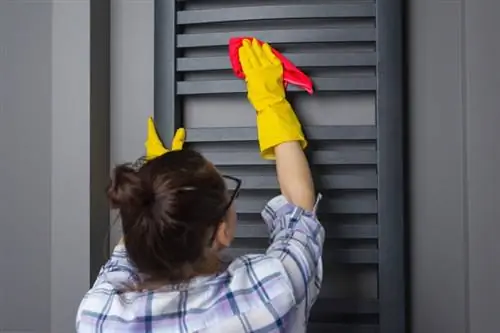
Cleaning the heating grille
For heaters that have a panel radiator, i.e. a smooth front, these are usually covered with a grille. You also have to remove dust and lint from these:
- Grid is usually loose on top
- otherwise loosen the fastening screws with a screwdriver
- Cleaning the heating grille under water
- Use dishwashing liquid or soap and cloth for cleaning
- Grease cleaner for stubborn dirt
- use a brush with bristles for gaps

Tip:
As a rule, the radiator grilles are too long for the dishwasher or sink. Therefore, the bathtub or shower is the appropriate place for cleaning.
Interior cleaning
There are different ways to clean heaters. It always depends on the type of radiator:
- Use the vacuum cleaner flat attachment
- vacuum in the gaps between the heater
- fast and effective cleaning
- blow the dust down from the gaps with a hairdryer
- place a damp cloth under the radiator
- Dust is well collected here
- special brushes for radiators
- suitable for stubborn dirt
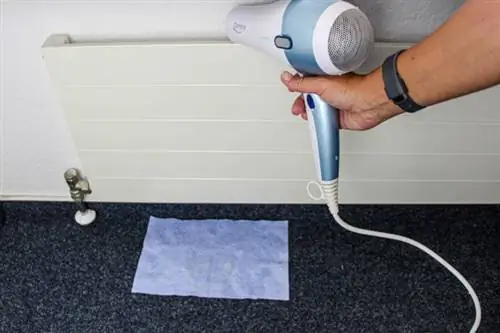
Tip:
Radiator brushes are available in many different sizes and lengths and you can choose the right ones for every radiator. They are also equipped so that the dust sticks directly to the brushes.
Water and dish soap/detergent
The new and popular variant with a water-detergent mixture is also showing great success for cleaning interiors.
For this you need:
- Towel or rag
- large tub or plastic container
- 2-3 tablespoons of detergent
- small container e.g. glasses
How to do it:
- Place a towel or cloth under the heater.
- Place the tub or another large vessel on top.
- Remove the heating grille.
- Add 2-3 tablespoons of detergent to a filled bucket of water.
- Scoop the finished mixture with a glass and gradually pour it through the slats.
- Repeat the process until no more dirt is flushed out.
- Let the heater dry.
Exterior cleaning
Exterior cleaning only takes place after interior cleaning. This cleaning is easy to handle:
- use a soft, damp cloth
- wipe the fronts and sides with conventional household cleaner
- remove stubborn stains with a soft brush or sponge
- finally wipe again with a damp cloth
- how to remove leftover cleaner
Tip:
Often only the radiator at the front and sides is cleaned. The gap between the heating and the wall is often forgotten. But here too, fusel and dust settle and you have to clean them with one of the devices presented, such as a hair dryer or vacuum cleaner.
Thermostatic head and radiator valve
When cleaning, don't forget the thermostat head and the radiator valve:
- Clean thermostat head with vacuum cleaner and brush attachment
- alternatively use a soft toothbrush or dusting brush
- then wipe with a damp cloth
- A feather duster or brush is suitable for the valve
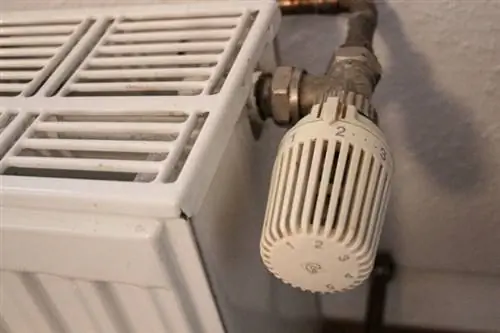
Note:
When cleaning, make sure not to screw around with the thermostat head or the valve and proceed with caution.
Frequently asked questions
How do you make a yellowed radiator white again?
If a radiator has yellowed over time, you don't necessarily have to paint it. If it only has the yellow tint without any other paint damage or flaws, it can easily be freshened up. To do this you need a cloth and a paint cleaner. The cleaner must be carefully rubbed over the entire surface of the radiator. The oxidation residues that are responsible for the yellowing effect are removed from the surface by the abrasive particles in the cleaner. The dissolved residues are then removed with a cloth and clear water.
How often should you bleed the heater?
Ventilation is also important so that the heater can give off enough heat. If the radiators don't get really warm even after thorough cleaning, it could be due to the air in the water. It is best to vent the heater when you first use it before winter. To do this, a small screw is opened on each radiator and only closed again when water comes out. Otherwise, you can also vent during the heating season if it doesn't get really warm.
How can I remove particularly stubborn dirt?
If a heater has not been cleaned for a long time, heavy deposits will form inside, which often cannot be removed using the methods described above. In this case, a steam cleaner can be helpful. The cleaner's spot jet nozzle is used. With a panel radiator you have to start from the top. The dirt is loosened and carried away downwards. There should be a piece of cardboard or a wet cloth on the floor to catch it. With finned radiators, make sure that the wall is not touched. In addition, cleaning with a steam jet may damage the paint on the heater.
How do I clean a tubular radiator?
Tube radiators are often used in bathrooms because they are also suitable for drying used towels. Special lamella brushes and a damp cloth are suitable for cleaning, with which you can easily get between the individual pipes. If you don't have a bladed brush, you can also use kitchen tongs with small sponges attached to both sides with rubber bands. A wooden spoon wrapped in a damp microfiber cloth is also suitable for cleaning the gaps.

